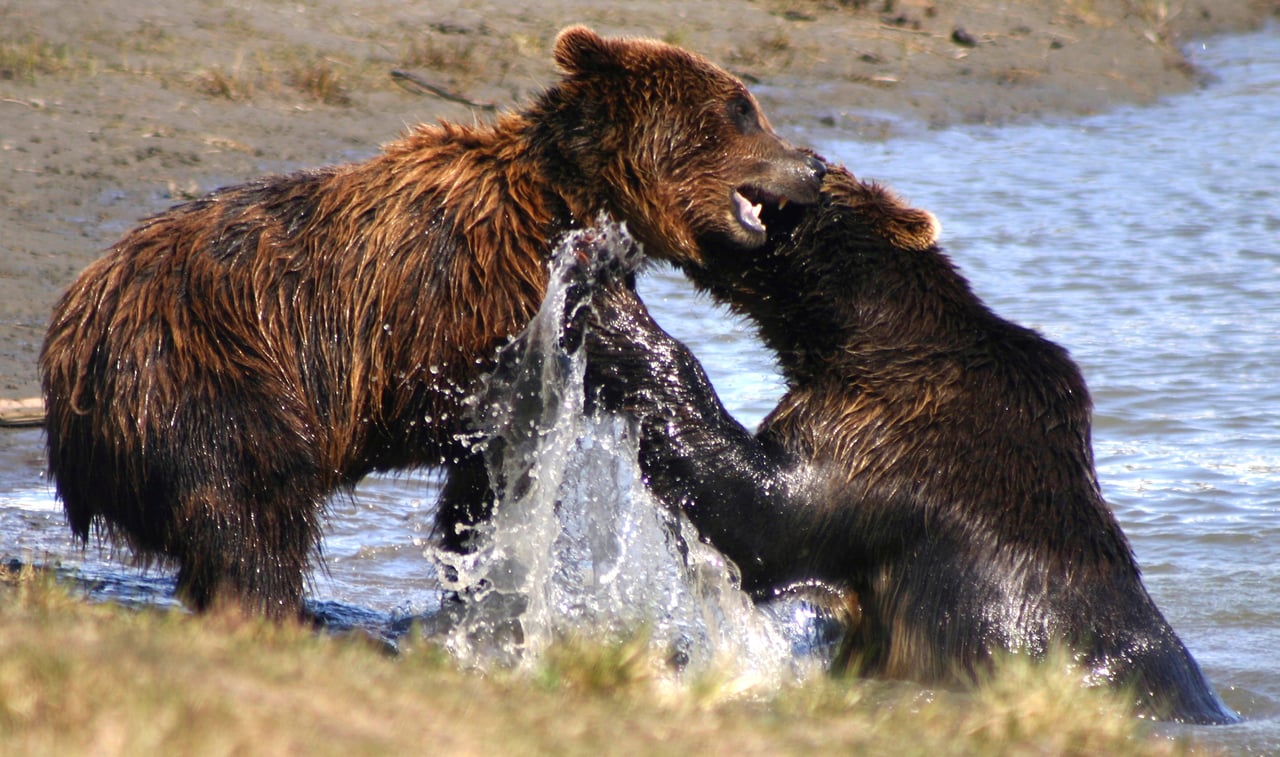
Bear facts
Common name: Bear
Scientific name: Ursidae
Distribution: North America, South America, Asia, Europe
Here are some bewildering facts about bears!
There are eight species of bears including the Asiatic black bear, sloth bear, sun bear, and brown bear. They are widely distributed around the world.
Bears are omnivorous – meaning they eat basically everything – with an excellent sense of smell, even rivalling that of dogs.
Bears are highly intelligent animals. They can count, use tools, solve problems and communicate with a range of vocalisations and complex facial expressions. Bears are typically solitary animals except during mating season and mothers when nursing their young. Despite their size and heavy build, bears are good runners, climbers, and swimmers.
Over the winter, bears dig dens or use shelters such as caves and logs to go into a deep sleep during winter periods, referred to as “torpor”. Contrary to popular belief, bears are not true hibernators.

Bears are sentient beings – they think, feel, and have unique personalities
- One study found that rescued bears in sanctuaries felt more positive in the spring, compared with in the summer. Their difference in mood may be due to the increased number of visitors seen in the summer, or due to the bears beginning to prepare for winter by den building and eating to store energy.
- Bears who have been rescued take time to feel more positive. In one study, bears who had been rescued recently (less than 6 months) expressed more negative emotions, compared with those who had been in the sanctuary for over 4 years.
- Stress hormones in rescued bears take weeks to reduce following previous traumas. Normal levels are typically not seen till at least 22 weeks following their rescue.
- Black bears have been known to adopt cubs spontaneously in the wild. In one case, a grandmother took over the rearing of her daughter’s cub, because the cub was small and weak, and was not growing as fast as her brothers.
- Black bears share food with unrelated bears when they are in need. Scientists have seen bears share food with other bears who are entering their territories due to food shortages. Altruistic behaviour like this was once thought to be unique to humans.
- Sun bears can precisely mimic the facial expressions of other bears when playing together. This skill, known as facial mimicry, is linked to empathy, and this level of precision has only been seen in humans and gorillas so far. The bears also showed social awareness, by only performing certain facial expressions when another bear was facing them.
- Bears can be good at hiding how they feel. Black bears may behave normally, but their heart rate increases when in the proximity of traffic, drones and other human disturbances, indicating high arousal levels and stress.
- Polar bears are thought to use tools, such as pieces of ice or stones, to kill one of their prey species - walruses.
